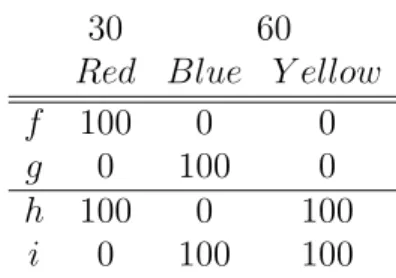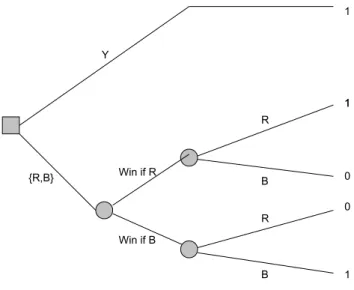Decision theory under uncertainty
Texte intégral
Figure




Documents relatifs
Convexity of the value function for losses is the most important element of prospect theory for the explanation of the Yitzhaki puzzle. However, the other elements, loss aversion
Sarin and Wakker (1998) show that under CEU, consequentialism, dynamic consistency and their sequential consistency property imply that deviations from Expected
Before the conclusion (Section 5), in Section 4, using the functional equations derived in Section 2, we provide a characterization of several standard utility functions (CARA, CRRA
A quantitative analysis of the drivers of link formation shows that the emergence of this structure is explained by the fact that, in absence of a centralized market place, agents
More exactly, according the information available, the decision-maker can assign a probability or a possibility to a given event, and define an additive fuzzy
Several attempts at modelling the atmospheric CH 3 Cl bud- get using carbon isotope ratios have been made (Harper et al., 2001, 2003; Thompson et al., 2002; Komatsu et al., 2004)
This paper analyzed the finite sample performance (in terms of the root mean squared error, RMSE) of a variety of estimators of (natural or pure) direct and indirect effects
The objective-probability results for social preferences cast a new light on Harsanyi's Social Aggregation Theorem, which assumes that both individual and social preferences